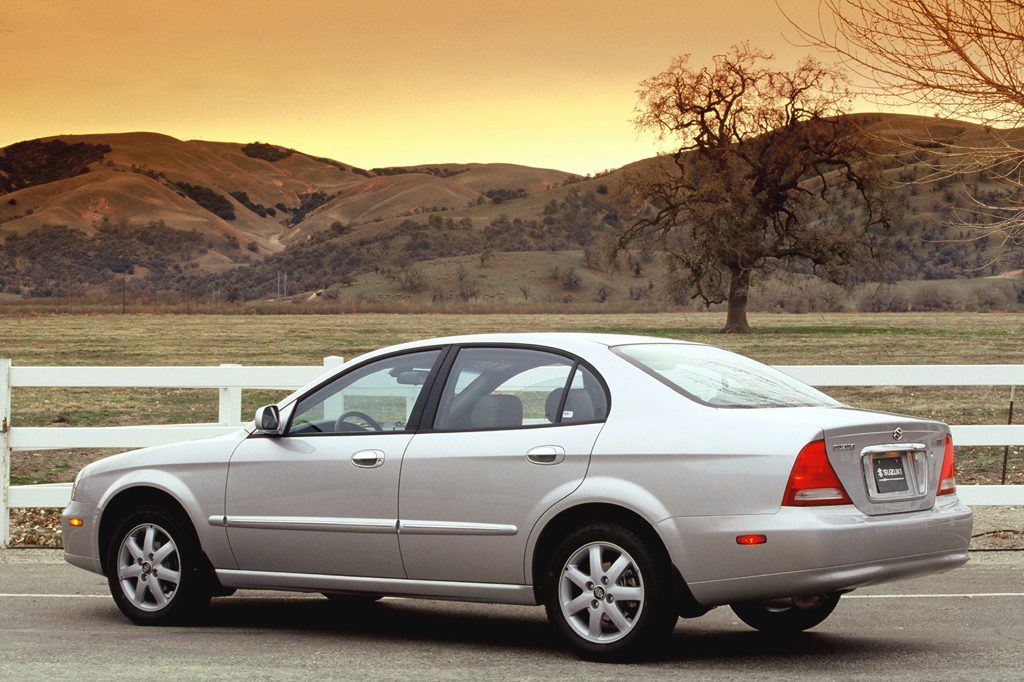| Compact car; Built in South Korea |
|
|
| Good condition price range: $2,300 – $4,900* |

2004 Suzuki Verona

2004 Suzuki Verona

2004 Suzuki Verona

2006 Suzuki Verona
| Pros: |
|
| Cons: |
|
Veronas are nicely equipped, but they’re plug-ordinary in performance, where their 6-cyl acts more like the 4-cyl engines of many rivals. Verona’s lower resale values vs. more-established competitors are an advantage to used-car buyers, as is Suzuki’s transferable warranty.
Overview
Suzuki introduced a South Korean-built compact-size sedan with an unusual-for-the-class engine arrangement for 2004. Verona offered S, LX, and top-line EX models. All came with a transverse-mounted 2.5-liter inline 6-cyl engine plus a 4-speed automatic transmission and 4-wheel disc brakes. LX and EX included ABS, which was not available on the S. EX also offered optional traction control. Side airbags were unavailable. All Veronas included fog lamps, heated power mirrors, power door locks with keyless entry/alarm, power windows, air conditioning, tilt steering wheel, CD/cassette stereo with steering-wheel controls, and split folding rear seat. The LX added 16-inch alloy wheels to replace 15-inch steel wheels, plus automatic climate control. EX added a sunroof, heated leather seats, and a power driver seat. Against the midsize Honda Accord and Toyota Camry it targeted, Verona was slightly shorter in both wheelbase and overall length, but a bit wider and some 250-300 lb heavier. Like other Suzukis, Verona carried a 3-year/36,000-mile bumper-to-bumper warranty that included roadside assistance, and transferable 7/70,000 powertrain coverage with provision for a free loaner car. Verona was designed by the bankrupt Daewoo Motor Company, Ltd., and built by GM Daewoo Automotive Technologies, which GM formed after buying parts of Daewoo. GM also owned a stake in Suzuki.
Yearly Updates
| 2005 Verona Front side airbags and a tire-pressure monitor were made standard. The LX added a sunroof to its list of standard equipment. |
| 2006 Verona Model offerings were trimmed to just Base and Luxury. Base equipment mimicked that of the former S, Premium that of the former top-line EX. ABS was added as standard on both. |
